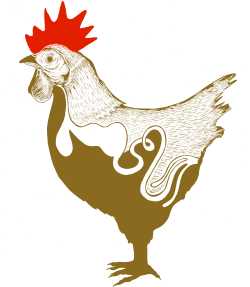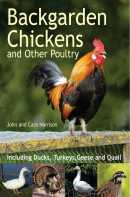Crop problems are not common but they do happen. The main cause is poor husbandry such as feeding too many treats in a desire to be kind or allowing the birds onto pasture with long grass. Most often they can be treated successfully by the home keeper.

Chicken Digestive System
What is the Crop?
The chicken’s crop is located right beneath the neck against the breast and just right of the centre.
When a chicken eats the food goes into the crop, which extends to accommodate the food and, especially with young chicks, can be easily seen protruding after the bird has eaten.
The crop is like a store where the food starts to soften before being passed down to the small stomach and gizzard where the food is broken down before heading into the duodenum and intestines to be digested.
It is a vital organ and when keeping chickens you need to keep a close eye on your birds’ crops to make sure they are working properly. A well working crop should be empty when the chicken wakes in the morning, there should be no strange smells emanating from the crop and the crop should fill during the day while the birds eats.
Impacted Crop (Crop Bound)
Some foods can cause a blockage in the system, an impacted crop or crop bound. These foods include long stalks grass, too much bread (especially dry bread which expands when wet) and pasta.
If a hen has stopped eating, looks miserable and the crop feels really solid to the touch, this could be the problem.
How to Cure Impacted Crop
Slowly trickle in 5 to 10ml of olive oil to lubricate the crop contents. A syringe (without a needle!) is good for this and you can get them from a chemist if you explain why you need them.
Knead the crop area gently to try and get things moving. Once contents have moved further down, they will be subjected to gastric juices that will help to break them down.
In the gizzard, the strong muscular walls and small stones grind them up. Ensure that the birds have access to poultry grit.
If olive oil fails, the next step is to try to get the affected bird to regurgitate the crop contents. Hold it with its head down, keeping the beak open with finger and thumb, and gently knead the crop, moving the contents down towards the beak. Take great care not to overdo this in case it chokes.
If neither of the above works a vet can operate to empty the crop or the bird can be culled. It depends here if it’s a pet or just livestock.
Sour Crop
This is basically a digestive upset. It’s often the result of unbalanced diet such as feeding too many of scraps. Sometimes the cause is proprietary feeds which have gone musty in store through being damp.
The crop will probably feel ‘squashy’ and the bird may well exude a foul sour smell on the breath.
How to Cure Sour Crop
Add 5ml of Epsom salts to a cup of warm water and mix well until totally dissolved. Next trickle in 5ml of the resulting liquid into the bird’s beak using a syringe or a teaspoon if no syringe is available.
For the next few days, instead of its normal diet, crush some layer’s pellets and mix with a little plain, live yoghurt until the mixture looks like thick porridge. Feed this, along with a drinker of fresh water.
The yoghurt has a probiotic effect in helping to replace the normal, healthy micro-flora of the digestive system.
If this doesn’t work in a few days consult a vet.
More Articles on Poultry Health, Illness & Problems
- Foot Problems with Chickens, Bumble Foot and Convict’s Foot
- Keeping Hens Healthy, Preventing Poultry Disease, Ailments
- Sour Crop & Impacted Crop (or Crop Bound)


